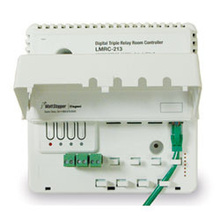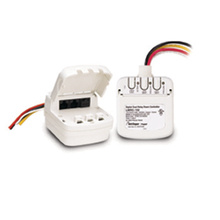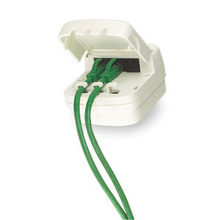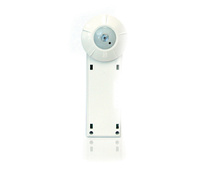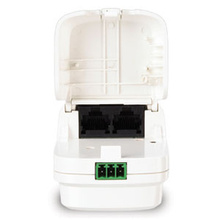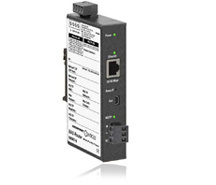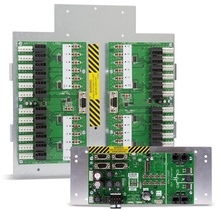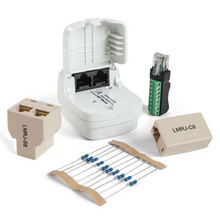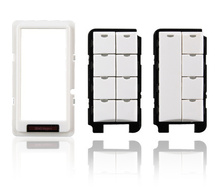Digital Lighting Management
Wattstopper’s networked lighting control solution, Digital Lighting Management, offers the flexibility in design for wired or wireless networking while allowing for energy savings. Create scalability with the interoperability to integrate with existing systems of record via BACnet. Wattstopper’s open, scalable, security-first approach to system design means a future-proof IoT foundation for smart buildings. Additionally, Wattstopper offers worry-free code compliance complete lifecycle services from design to ongoing operations that allow you to automatically stay on top of changing code requirements.Brand
Choose from one of Legrand's brands.
Type
Value that Specifically Names the Type/the Application Value of the Closest Piece of Equipment/the Designated Type of Construction/the Generic Type/the Manufacturer Type Designation/the Specific Function/the Type of Application
Product Certifications
Trust in quality and compliance. Use this filter to find products that have undergone thorough testing and evaluation to ensure they meet the quality and safety standards for a wide range of certifications.
Standard
The industrial standard(s) to which a device is manufactured, operated, or tested.
Cable Entry
The Type/Specification of the Access Points Where the Cables are Made to Enter or Exit.
Frequency Band
A Continuous Group, or Range, of Frequencies with an Upper Limit and a Lower Limit
Amperage
Maximum electrical current the conductor or device can carry before sustaining immediate or progressive deterioration
Installation Location
Where a Device is or is to be Installed
Mounting
Something that Serves as a Support, Setting, or Backing for the item
NEMA Rating
National Electrical Manufacturers Association Ratings are Standards that are Useful in Defining the Types of Environments in Which an Electrical Enclosure can be Used
Contact Rating
The Voltage, Current, and Power Capacities of Relay Contacts Under Specified Environmental Conditions
Cable Type
The Type of a Assembly of one or More Insulated Conductors, or Optical Fibers
Compatibility
Capability of Being Used with or Connected to Different Types of Devices or Components without any Modifications
Number of Gangs
The amount of switches on the plate.
Antenna
A Conductor or Set of Conductors Used to Radiate RF Energy Into Space or to Collect RF Energy from Space or to Do Both
Temperature Rating
The Designated / Rated / Maximum / Range Temperature at Which the Instrument May be Used in Continuous Operation without Loss of its Basic Properties and performance
Contact Configuration
Different Switching Functions of the Relay Contacts
IP Rating
Levels of sealing effectiveness of electrical enclosures. IP20, IP55, IP53, IP68
Indoor/Outdoor
Enviromental Conditions rating on the product. Indoor Only, Outdoor, Both
Number of Ports
The Number of Application-Specific or Process-Specific Software Construct Serving as a Communication Endpoint / is Generally a Specific Place for Being Physically Connected to Some Other Device /A Number of Physical Access Point(S) Between a Conductor and
Timer Duration
Amount of Time a Timer can Last
Input Voltage
The Difference of Electrical Potential Between Two Points of an Electrical or Electronic Circuit Entering a System
Output Voltage
The Voltage Measured at the Output Terminals of a Power Supply
Mounting Type
The way the item is mounted for display. The method by which a sign or label is affixed to a surface for display. Many signs will not have any defined mounting type and so will have no value captured for this attribute.
Number of Buttons
The Number of Keys/Switches in the item Used for Selecting a Particular Function
Number of Knockouts
How many knockouts are there in the product
Number of Devices
The amount of devices the product can connect to.
Has Battery
A Device for Converting Chemical Energy Into Electrical Energy a Group of Two or More Connected Voltaic Cells
Knockout Size
Physical dimension of the knock-out size, could be diameter or a range
Enclosure Type
Style, Type, Size, Etc. of the Enclosure of a Device
Data Transfer Rate
The Speed at Which Data is Transferred from one Location to Another with in the Time Frame
Shielded/Unshielded
Denotes whether a cable is designed with an extra layer of metal foil or braid surrounding the inner conductor to protect against electromagnetic interference (EMI).
Power Supply
The Specification of the Electrical Power or the Description of This Electrical Power Which is Required for the Proper Functioning of the item
Wire Gauge
Measuring and Indicating a Quantity of Wire
Battery
A Device for Converting Chemical Energy Into Electrical Energy a Group of Two or More Connected Voltaic Cells
Encryption
The Activity of Converting Data or Information Into Code
Wattage
amount of watts used
Product Family
Used to identify and differentiate offerings within a particular product line. Product families are typically treated as adjectives. It is not recommended to use the product line (ex: Wiremold®) and product family names (Evolution™) together. This will introduce a level of unnecessary confusion for the audience.
Number of Switches
Number of electrical switches
Operating Temperature
The Temperature at Which the Unit is Safely Operated or Kept without Damaging or Changing the performance Characteristics of the Unit
Included
The Supplementary items Supplied with the Product Which May be Necessary for the Optimum Operation of the Product
Product Has Potential to Contribute to LEED
This product contributes to earning credits in the LEED rating system.
Wire Connection Type
Describes the method used to connect wires to the device, such as screw terminals, push-in connectors, or lead wires.
Operating Temperature Min
Indicates the lowest possible temperature a device can be safely used without the risk of failure or damage.
Battery Life
Describes the approximate amount of time a battery can power a device before it needs to be recharged or replaced.
Security Method
Describes the functions or methods used by a device or software to protect against unauthorized access to a device or software platform.
On Function
Describes the mode of operation for devices that can be turned on, indicating whether they stay on continuously or operate on a timer or sensor.
Number of Connections
Jacket Material
The outer material used to insulate a cord or cable's wiring.
Battery Capacity
Describes the maximum amount of electrical charge that a battery can store and deliver.
Engraving Type
Refers to the available styles to mark or inscribe text, symbols, or patterns on a product.
Seismic Tested
Indicates whether a device has been tested to withstand and/or perform under certain seismic conditions.
Sensor Coverage
Describes the total area, measured in square footage, within which a sensor can detect presence or movement.
Antenna Pattern
Captures the directional representation of how radio waves are sent and received by the antenna.
Storage Temperature
Describes the temperature or range of temperatures at which a product can be safely stored or kept without damaging or altering the performance characteristics of the device.
Indicator
Describes the type/specification of signaling a device uses to indicate abnormal and/or operating conditions.
Antenna Gain
A calculated measure of how effectively an antenna sends or receives radio signals in a particular direction, measured in dBi (Decibals relative to isotropic).
Termination Style
The style of connection used for electrical termination between two devices.
Timer Type
The mechanism by which the timer operates, such as mechanical, digital, or programmable.
Dimming Compatibility
Describes the method(s) used by a device or system to adjust the brightness of a lighting load.
Bus Power Supply
Refers to the electrical power provided to a device through a common communication bus.
Max Distance Support
Refers to the maximum range a signal can be effectively supported to by a device.
Topology
The arrangement in which the Nodes of a LAN are connected to each other.
Works With
Need to ensure your choice works with your device, system, or software? Select your needs using this filter to confirm compatibility.
Sensor Coverage Pattern
Describes the shape of the area that a sensor is able to detect presence or movement within, measured in degrees.
Current Draw
The amount of electrical current the device uses during operation, measured in amperes (or amps).
Requires Neutral Wire
Indicates whether a device requires a neutral wire to function properly.
Mounting Hole Type
Describes the style of holes or openings used to either mount a device or mount to a device.
Operating Humidity
Describes the range of humidity at which a device can be utilized safely without the risk of failure or damage.
Jacket Application
Describes the specific application(s) a cable's jacket is designed to be used in, such as in-wall, plenum, or riser.
Jacket Color
Describes the color used on the outer covering of a cord or cable; often used as a way to easily identify different cables or signal types in networking setups.
Product Series
A collection of related products that share a common design, technology, or purpose. Products within the series either maintain a cohesive brand / style identity or work together to serve a particular solution.
Wireless Range
Describes the maximum distance wireless devices can be separated while preserving signal quality and reliability.
Enclosure Size
The approximate height of the compatible wiring enclosure.
Line Frequency
The frequency of alternating current (AC) in an electrical power system, measured in Hz. Also commonly referred to as Utility Frequency, Power Line Frequency, or Mains Frequency.
Conductor
Describes the number and configuration of electrical wires used within a cable to transmit signals.
Features
Unique characteristics and functionality that set the product apart from others in its field.
Sensor Technology
The technology used by a device to sense a change in signal or stimulus.
Operating Temperature Max
Indicates the highest possible temperature a device can be safely used without the risk of failure or damage.
Warranty Type
The product warranty that accompanies the specific product.
Device Interface
Refers to the type and/or specification of connectors used by a device to establish a connection with other devices or systems for data transfer.
Environmental Conditions
Describes the relative range of climatic standards a device can safely operate within.
Finish
Describes the specific surface treatment applied to the outer product for either aesthetics and/or durability.
Control Algorithm
Refers to the set of rules or calculations a device utilizes to automate and regulate its use to optimize performance.
Ultrasonic Frequency
Describes the specific frequency at which a sensor emits and detects sound waves in order to measure distances, detect objects, or perform other functions.
Maximum Power
Denotes the maximum electrical current that can be delivered by any given unit.
Jacket Rating
Denotes the NEC (National Electric Code) standards the outer casing/jacket surrounding a cable or cord's internal wiring and insulation is rated to.
Number of Rockers
The total number of rocker-type electrical switches included on a device. Typically used to switch between two or more functions.
Sensor Mounting Height
Describes the optimal vertical distance at which a sensor should be installed to ensure reliable detection of motion or other target conditions.
Number of Relays
Denotes the number of controlled loads a device can support.
Material
Indicates the primary material(s) used to construct a product.
Cable Diameter
The typical outer diameter of a cable.
Application Sector
Refers to the expected environment(s) or intended usage(s) for a product (e.g. Residential, Commercial, Industrial, etc.).
Sensing Range
The total Possible Sensing Capability of the Sensor, Beginning After the Deadband, and Extending Out as Far as the Sensor is Able to Reach Effectively
Load Rating
The Maximum Load that a Device is Designed to withstand without Breakage or Loss of performance
Protocol
A Convention or Standard that Controls or Enables the Connection, Communication, and Data Transfer Between Two Computing Endpoints, the Rules Governing the Syntax, Semantics, and Synchronization of Communication
Sensor Type
The Device that Receives a Signal or Stimulus (As Heat or Pressure or Light or Motion Etc.) and Responds to it in a Distinctive Manner
Connector Type
The Type of Connectors / Terminals that Tool can Crimp to Wire or Cable
-
Added to Favorites Go to favoritesRemove from favorites?Something went wrong. Please try again later.Product not added for comparison. Please remove any current selection to add this. Manage SelectionsDLM Dual Tech Ceiling Mount Sensor V4, WhiteLMDC-100 WattstopperThe LMDC-100 is a low profile Dual Technology Ceiling Mount Occupancy Sensor.
-
Added to Favorites Go to favoritesRemove from favorites?Something went wrong. Please try again later.Product not added for comparison. Please remove any current selection to add this. Manage SelectionsDLM Room Controller, 1 Relay, 0-10V DimmingLMRC-211 WattstopperLMRC-210 Series Digital Room Controllers include one, two or three relay(s) to switch a total of 15 or 20 amps, a highefficiency switching power supply and one 0-10 volt output per relay for control of dimmable loads including electronic ballasts (Advance Mark 7, or equivalent).Other Options Available
-
Added to Favorites Go to favoritesRemove from favorites?Something went wrong. Please try again later.Product not added for comparison. Please remove any current selection to add this. Manage SelectionsDLM Wired Network Bridge ModuleLMBC-300 WattstopperThe LMBC-300 Digital Network Bridge provides a segment network connection for a group of Digital Lighting Management (DLM) local network devices.
-
Added to Favorites Go to favoritesRemove from favorites?Something went wrong. Please try again later.Product not added for comparison. Please remove any current selection to add this. Manage SelectionsDigital PIR Ceiling Mount sensorLMPC-100 WattstopperThe LMPC-100 low profile Digital PIR Ceiling Mount Occupancy Sensor uses passive infrared (PIR) technology and one of three lenses to detect occupancy in different types of spaces for energy-efficient control of lighting and plug loads.Other Options Available
-
Added to Favorites Go to favoritesRemove from favorites?Something went wrong. Please try again later.Product not added for comparison. Please remove any current selection to add this. Manage SelectionsOpen Loop Multiple Zone DLM photosensorLMLS-500 WattstopperThe LMLS-500 is an open loop, multi-zone photosensor that measures the daylight contribution.Other Options Available
-
Added to Favorites Go to favoritesRemove from favorites?Something went wrong. Please try again later.Product not added for comparison. Please remove any current selection to add this. Manage SelectionsDLM Single Relay Room Controller, On/Off, 120-277VLMRC-101 WattstopperLMRC-100 Series Digital Room Controllers include one or two relay(s) for on/off control of a total of 20 amps, and a highefficiency switching power supply.Other Options Available
-
Added to Favorites Go to favoritesRemove from favorites?Something went wrong. Please try again later.Product not added for comparison. Please remove any current selection to add this. Manage SelectionsDLM Plug Load Controller 20A, 120V, 60Hz, On/OffLMPL-101 WattstopperLMPL-101 Plug Load Controllers include a 20 amp relay for on/ off control of connected outlets, and a high-efficiency switching power supply.Other Options Available
-
Added to Favorites Go to favoritesRemove from favorites?Something went wrong. Please try again later.Product not added for comparison. Please remove any current selection to add this. Manage SelectionsDLM Dual Tech Corner Mount SensorLMDX-100 WattstopperThe LMDX-100 Sensor uses both passive infrared (PIR) and ultrasonic technologies to achieve precise occupancy sensing.Other Options Available
-
Added to Favorites Go to favoritesRemove from favorites?Something went wrong. Please try again later.Product not added for comparison. Please remove any current selection to add this. Manage SelectionsRJ45 Cables, 50 feet, plenum rated GreenLMRJ-P50 WattstopperLMRJ Series cables connect Digital Lighting Management (DLM) components without the need for toolsOther Options Available
-
Added to Favorites Go to favoritesRemove from favorites?Something went wrong. Please try again later.Product not added for comparison. Please remove any current selection to add this. Manage SelectionsClosed Loop Single Zone DLM photosensorLMLS-400 WattstopperThe LMLS-400 is a closed loop photosensor that measures the ambient light level in order to automatically switch or dim one zone of lighting.Other Options Available
-
Added to Favorites Go to favoritesRemove from favorites?Something went wrong. Please try again later.Product not added for comparison. Please remove any current selection to add this. Manage SelectionsLMCP panel w/24-relay max capacityLMCP24 WattstopperThe LMCP series panel provides simple networkcapable lighting control enabling the automation of lighting functions throughout an entire facility.Other Options Available
-
Added to Favorites Go to favoritesRemove from favorites?Something went wrong. Please try again later.Product not added for comparison. Please remove any current selection to add this. Manage SelectionsDLM Ultrasonic Ceiling Mount Sensor, 1000 sq ftLMUC-100-2 WattstopperThe LMUC-100 low profile Digital Ultrasonic Ceiling Mount Occupancy Sensor uses ultrasonic diffusion technology to achieve 360° occupancy sensing for energy-efficient control of lighting and plug loads.Other Options Available
-
Added to Favorites Go to favoritesRemove from favorites?Something went wrong. Please try again later.Product not added for comparison. Please remove any current selection to add this. Manage SelectionsDigital Enhanced Plug Load Controller, On/Off, 120V, 60HzLMPL-201 WattstopperLMPL-201 Plug Load Controllers include a 20 amp relay for on/ off control of connected outlets, and a high-efficiency switching power supply.
-
Added to Favorites Go to favoritesRemove from favorites?Something went wrong. Please try again later.Product not added for comparison. Please remove any current selection to add this. Manage SelectionsDLM Segment Network Wire, 1000 SpoolLM-MSTP-S1000 WattstopperDigital Lighting Management segment network plenum rated wireOther Options Available
-
Added to Favorites Go to favoritesRemove from favorites?Something went wrong. Please try again later.Product not added for comparison. Please remove any current selection to add this. Manage SelectionsDLM Isolated Relay InterfaceLMRL-100 WattstopperEnables seamless integration of third party devices such as HVAC systems or exhaust fans.
-
Added to Favorites Go to favoritesRemove from favorites?Something went wrong. Please try again later.Product not added for comparison. Please remove any current selection to add this. Manage SelectionsOutdoor Photocell, 0 - 200 ft CandlesLMPO-200 WattstopperThe LMIO-301 photocell input module is an accessory for a networked Digital Lighting Management (DLM) installation that allows an LMSM segment manager or LMCP panel to read ambient light levels for use in controlling exterior lighting or interior lighting installed in brightly daylit spaces such as atriums.
-
Added to Favorites Go to favoritesRemove from favorites?Something went wrong. Please try again later.Product not added for comparison. Please remove any current selection to add this. Manage SelectionsDLM Data Interface, USALMDI-100-U WattstopperThe LMDI-100 Serial Data Interface connects a Digital Lighting Management (DLM) local network to a third party system for coordinated control of devices including lighting controls, AV equipment, shade controls and user interfaces by either system.
-
Added to Favorites Go to favoritesRemove from favorites?Something went wrong. Please try again later.Product not added for comparison. Please remove any current selection to add this. Manage SelectionsLI Enclosure w/24 Relay Capacity Interior, Surface MountLENC24S WattstopperLENC panel enclosures are designed specifically to work with all configurations of LMCP panel interiors containing 8 to 48 relays.Other Options Available
-
Added to Favorites Go to favoritesRemove from favorites?Something went wrong. Please try again later.Product not added for comparison. Please remove any current selection to add this. Manage SelectionsNetwork accessory enclosure 9 routers, 16 port switchesLMNC-9 WattstopperThe LMNC is a surface-mount NEMA1-rated enclosure with DIN rails for mounting DLM network components.Other Options Available
-
Added to Favorites Go to favoritesRemove from favorites?Something went wrong. Please try again later.Product not added for comparison. Please remove any current selection to add this. Manage SelectionsMSTP Router for LI Controls BASRT-B-WS DIN mountingNB-ROUTER WattstopperThe NB-ROUTER provides a connection point between a single Digital Lighting Management (DLM) segment network and an Ethernet LAN.
-
Added to Favorites Go to favoritesRemove from favorites?Something went wrong. Please try again later.Product not added for comparison. Please remove any current selection to add this. Manage SelectionsRetrofit kit for LI 48 relay panel interiorLMCP-LI48 WattstopperThe LMCP retrofit kits provide a simple upgrade option to existing Wattstopper Lighting Integrator and other legacy relay panels (GE and Horton Controls SWC, SWS, SWSP and TLC panels).Other Options Available
-
Added to Favorites Go to favoritesRemove from favorites?Something went wrong. Please try again later.Product not added for comparison. Please remove any current selection to add this. Manage SelectionsLI Enclosure for 8 interior, SurfaceLENC8S WattstopperLENC panel enclosures are designed specifically to work with all configurations of LMCP panel interiors containing 8 to 48 relays.
-
Added to Favorites Go to favoritesRemove from favorites?Something went wrong. Please try again later.Product not added for comparison. Please remove any current selection to add this. Manage SelectionsDigital PIR Corner Mount Sensor, high densityLMPX-100 WattstopperThe LMPX-100 Digital PIR Corner Mount Occupancy Sensor uses passive infrared (PIR) technology and one of four lenses to detect occupancy in different types of spaces for energy efficient control of lighting and plug loads.Other Options Available
-
Added to Favorites Go to favoritesRemove from favorites?Something went wrong. Please try again later.Product not added for comparison. Please remove any current selection to add this. Manage SelectionsLI Enclosure w/48 Relay Capacity Interior, Surface MountLENC48S WattstopperLENC panel enclosures are designed specifically to work with all configurations of LMCP panel interiors containing 8 to 48 relays.Other Options Available
-
Added to Favorites Go to favoritesRemove from favorites?Something went wrong. Please try again later.Product not added for comparison. Please remove any current selection to add this. Manage SelectionsPlenum rated coupler splitter for DLMLMRJ-CS8 WattstopperLMRJ series couplers, splitters and other accessories connect Digital Lighting Management (DLM) components without the need for tools or point-to-point discrete wiring.Other Options Available
-
Added to Favorites Go to favoritesRemove from favorites?Something went wrong. Please try again later.Product not added for comparison. Please remove any current selection to add this. Manage SelectionsRetrofit kit for GE 24 relay SWS or TLC relay panelLMCP-GE24 WattstopperThe LMCP retrofit kits provide a simple upgrade option to existing Wattstopper Lighting Integrator and other legacy relay panels (GE and Horton Controls SWC, SWS, SWSP and TLC panels).Other Options Available
-
Added to Favorites Go to favoritesRemove from favorites?Something went wrong. Please try again later.Product not added for comparison. Please remove any current selection to add this. Manage SelectionsPhotosensor mounting bracket for ceiling mount applicationsLMLS-MB1 WattstopperPhotosensor mounting bracket for J-box mounting.Other Options Available
-
Added to Favorites Go to favoritesRemove from favorites?Something went wrong. Please try again later.Product not added for comparison. Please remove any current selection to add this. Manage SelectionsDLM Open Loop Multi Zone Dimming, On/Off Photosensor, USALMLS-500-U WattstopperThe LMLS-500 is an open loop, multi-zone photosensor that measures the daylight contribution in order to automatically switch or dim up to three zones of lighting.Other Options Available
-
Added to Favorites Go to favoritesRemove from favorites?Something went wrong. Please try again later.Product not added for comparison. Please remove any current selection to add this. Manage SelectionsConduit Adapter for enhanced room controllerLMRC-CA WattstopperLMRC-210 Series Digital Room Controllers include one, two or three relay(s) to switch a total of 15 or 20 amps, a highefficiency switching power supply and one 0-10 volt output per relay for control of dimmable loads including electronic ballasts (Advance Mark 7, or equivalent).
-
Added to Favorites Go to favoritesRemove from favorites?Something went wrong. Please try again later.Product not added for comparison. Please remove any current selection to add this. Manage SelectionsDLM Engraving for Color KitsLM-ENGRAVING WattstopperEngraving for button kit(s) selected from available catalogs and series.

























